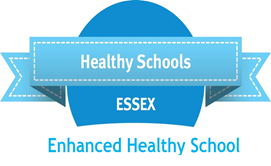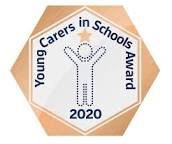Transition
EYFS Transition at Holy Cross
During the summer term, pre-school children who will be starting with us in September are invited to make at least two one-hour visits to our reception class. Parents are also invited to have a one to one meeting with the Headteacher, to discuss any concerns that they may have about their child starting school. We also hold an induction meeting where parents/carers have the opportunity to meet the Class Teacher, Headteacher, Governors. In this meeting parents/carers receive information regarding the early year’s curriculum and school routines. At the beginning of September a home visit is made by the reception class teachers.
In September, children are split into two groups within each class. On the first day group 1 attends the morning session and group 2 attends the afternoon session. On the second day group 2 attends the morning session and group 1 attends the afternoon session. On the third day all children attend full time, unless it is mutually agreed with the Headteacher and reception class teacher that the child will benefit from a continuation of the part time arrangement. When the children begin school, they spend the majority of time in their own outdoor area and classrooms. When the class teachers feel that the children are ready, they join the rest of school for playtimes, lunchtimes, assemblies and Mass.
Reception to Year 1 transition The reception and the year 1 class teachers work together to ensure that the transition from the early year’s foundation stage to Key Stage 1 is as smooth as possible.
- Children are encouraged to develop independence when dressing and undressing and when organising their personal belongings throughout the reception year.
- The reception teachers plan for more structured activities to be undertaken during the summer terms, encouraging less dependence on adult support.
- Reception children meet the year one teachers during assembly, playtime and during other whole school activities throughout the year.
- Reception children visit their new classes and teachers for an hour session in July.
- Individual early years profiles are passed on to the year 1 teachers.
- The reception and year one teachers meet to discuss individual needs of children in July. Year one teachers are given a copy of the profile report together with a short commentary on each child’s skills and abilities in relation to the three key characteristics of effective learning. These inform a dialogue about each child’s stage of development and learning needs.
- Where possible, the children in year one continue to enjoy practical learning experiences which gradually become more formalised towards the end of the academic year.
- The ‘Little Wandle’ approach to phonics and spelling is continued into year one
End of year class transition in July, all year groups have a transition morning where they get to meet their new class teachers and TA. Any children that need additional transition are supported with this by school staff.
Mid-year transition at Holy Cross
The transition to primary school in the middle of the year can be a challenging experience for both children and their families. Adjusting to a new environment, routines, and expectations can require thoughtful planning and support. At Holy Cross we strive to give all our children the best support. Within the children’s starting packs the children have a transition questionnaire to fill out with parents, which we ask to be returned to school to help us understand where the child is social, emotional and academically. This is shared with our SEMH Lead and class teachers to help with settling in to our school. Mrs Gallagher our SEMH Lead meets with all new transition children to ensure they have a class transition buddy to support the child within their first few weeks of joining with friendships, routines and playtimes and getting to know staff. Mrs Gallagher has a second check in with children after a few weeks to ensure the new child is settling in. Regular update meetings take place to ensure all our children are supported within our school.
Here are some strategies and ideas for a successful mid-year transition to Holy Cross:
1. Prepare Emotionally and Mentally
- Talk About the Change: Discuss the upcoming transition with your child. Explain what will be different, what will remain the same, and how exciting it can be to meet new friends and learn new things.
- Some children may feel anxious about moving schools or changing classrooms. Reassure them that it’s normal to feel a little nervous and that they’ll adjust in time.
Visit to our School
- Pre-visits: As a school we encourage all parents to visit our school for a tour before a child starts school with us and have a visit to the classroom before the first day. Seeing the new environment can reduce uncertainty and make the child feel more comfortable.
- Meeting Key Staff Members: Introducing your child to their peers, class teacher, Headteacher, and other school staff can help establish a sense of familiarity and comfort.
Establish a Routine
- School Day routines: Try to establish a consistent routine at home that mirrors the school day (e.g., wake up at the same time, have meals at regular times). This helps the child adjust to the new routine.
- Sleep Routine: Ensure the child is getting enough rest, as settling into school life can be tiring for children, especially during a transition.
- Review the School's Expectations: Familiarise yourself and your child with any new rules, timetables, and expectations to ease the transition.
- Encourage Friendships: Facilitate play dates or social gatherings with classmates to help the child develop new friendships outside of school.
- Buddy System: Some schools assign buddies or mentors to help new students settle in. If this is available, ensure your child is aware of who they can turn to for help.
- Observe Social Skills: Encourage positive social behaviour, such as sharing, taking turns, and asking for help when needed.
Communicate with us
- Talk to Teachers: Make sure the teacher understands the child’s background, any previous educational experiences, and any special needs or concerns. EYFS and Key Stage 1 use Tapestry to communicate with parents and Key Stage 2 use Seesaw to communicate with parents - you can use these platforms to liaise with your child’s class teacher
- Ask for Updates: Request regular updates on your child’s progress, behaviour, and social adjustment. This will help you stay informed and ensure that any issues are addressed early on.
Boost Confidence in Learning
- Positive Reinforcement: Reinforce the importance of trying new things and celebrating small achievements in their new school setting.
- Support Learning at Home: Help your child with schoolwork or any tasks they might be struggling with. Make sure to create a quiet, supportive environment at home for them to work in.
- Foster a Growth Mindset: Encourage resilience and the belief that challenges are opportunities to learn and grow.
Involve the Family
- Engage in School Events: Participate in school events and activities to show your support and keep up with school life.
- Collaborate with Other Parents: Reaching out to other parents for advice or shared experiences can be helpful, especially if they have children who have also transitioned to the same school. We have weekly newsletters with up-to-date calendar events and all the information about what is going on in school - this is emailed out to all parents on a Friday afternoon, every week. Email communication and year group social media chats are also set up by parents to support each other. We also have a school Facebook page where you can find what’s going on within the school.
Be Patient
- Allow Time for Adjustment: Every child adjusts to a new school setting at their own pace. It may take time for them to feel comfortable, make friends, and adapt to the academic demands.
- Check in Regularly: Have regular check-ins with your child about their feelings and any challenges they may be facing. Open communication is key to understanding their needs.
The mid-year transition to a primary school setting can be a positive experience if given the right support and time to adjust. By staying involved, staying patient, and fostering a positive attitude, the child can overcome initial challenges and thrive in their new school environment.
Supporting Transition to Secondary School:
The transition from primary to secondary school is a significant milestone in a child’s educational journey. It is a time of change, growth, and often, uncertainty. This period can be both exciting and daunting for children, as they move from a familiar, small-scale environment to a larger, more complex setting with new academic expectations, social dynamics, and personal challenges. It is essential to provide a robust support system to help students adjust smoothly to their new environment and feel confident and prepared as they begin this next phase of their education.
One of the primary concerns during this transition is the increased academic demands that children will face in secondary school. The subjects become more specialised, the workload more challenging, and the pace of learning faster. To help students succeed academically:
- Curriculum Familiarisation: Early exposure to secondary school subjects and their structures is vital. Introducing core to the core subjects (English, mathematics, science, etc.) through focused revision sessions or extracurricular activities can ease their transition. In Key stage 2 there are opportunities for cross collaboration between classes.
- Learning Skills: Secondary school often requires a more independent approach to learning. In year 6 our children are given transition packs to help understand the changes and prepare the children for day to day situations which may occur. Our focused sessions are delivered to each Year 6 class over four sessions. The children complete a survey on how they feel about secondary school. Mrs Gallagher also meets with the class teachers to look at children who would benefit from extra support. This helps to determine the additional support the child may need. Class sessions look at scenarios in secondary schools, fears and worries, friendship work, timetables, expectations, homework, managing workloads at lunchtimes, bullying and support circles and who we can ask for help.
- Individualised Support: Identifying children who may require extra academic help and providing additional resources such as mentoring ensures that no one is left behind. Encouraging a growth mindset can also help children approach challenges with resilience. Our school meets with all secondary schools to ensure information is passed on to support the children. Mrs Gallagher also organises secondary children to come and visit our year 6 children to speak about their experiences and ask questions. Additional visits are also arranged if a child requires more support.
Emotional and psychological adjustments are just as important as academic readiness. Moving to secondary school often means navigating new social environments, building new relationships, and developing a sense of self in a more complex social landscape. To support emotional well-being.
- Social Skills Development: Offering programs or sessions that help children build communication, teamwork, and conflict resolution skills can help them navigate the social intricacies of secondary school. This can be through peer-led groups, team-building activities, or guided role-playing scenarios. In Years 2,4, 5 and 6 our children can undertake training to build skills to become Playground Buddies to make sure that no-one is alone. Playleaders learn to mediate and Co-0rdinate play. All year 5 children have the training over three afternoons in September. Year 6 have the opportunity to apply for Peer Mediator training. Children selected have two days' training on conflict resolution, peacemakers, feelings and emotions and, through lots of role play, the children learn mediation skills.
- Building Confidence and Resilience: Transitioning to secondary school can be overwhelming. Supporting children in building confidence and resilience through mentoring programs or regular check-ins with staff can help them face challenges positively. Encouraging an open, non-judgmental space for children to talk about their concerns can alleviate anxiety.
- Buddy Systems: Some secondary schools pair year 7 children with buddies from older years, which can provide them with a sense of security and familiarity. These peer connections often act as guides, showing new students how to navigate the school socially and emotionally and helping their confidence in the first few weeks.
- Parents play an important role in supporting their child through the transition to secondary school. Open communication between school staff and parents is crucial. Parents can help by maintaining a calm, supportive home environment. Encouraging their child to express feelings and discussing potential challenges they may face in school can prevent feelings of isolation or feeling overwhelmed. When your children are transitioning to secondary school, please ensure the children attend all their settling meetings/ summer school days as this plays a big part in your child’s smooth transition. Celebrating success and recognising achievements—big and small—can boost a child’s self-esteem and motivation. Whether through verbal encouragement or family celebrations, reinforcing positive outcomes fosters a sense of accomplishment.
Our school emphasises the importance of inclusivity, respect, and diversity. Initiating programs or activities that promote positive relationships and mutual respect helps ensure all children feel valued and connected, fostering a sense of belonging.
Clear communication is key to ensuring that children have easy access to information about school routines, policies, and procedures is crucial. This could be achieved through handbooks, newsletters, or digital platforms that children can refer to when needed.
Secondary school is also a time for personal growth and the development of skills that extend beyond academics. It is important to encourage children to explore their interests and talents. Encouraging to engage in extracurricular activities, whether academic, athletic, or artistic, can help them develop skills outside the classroom, foster friendships, and build confidence.
Goal Setting and Self-Reflection: Teaching children how to set realistic goals, track their progress, and reflect on their personal growth can help them develop a strong sense of responsibility and self-direction.
The transition to secondary school can be a challenging yet rewarding experience for children. With a collaborative approach involving academic preparation, emotional support, parental engagement, and a nurturing school environment, children can successfully navigate this significant change. By addressing both the academic and personal aspects of their development, us as we can ensure that students feel confident, capable, and ready to take on the opportunities and challenges of secondary education.











